
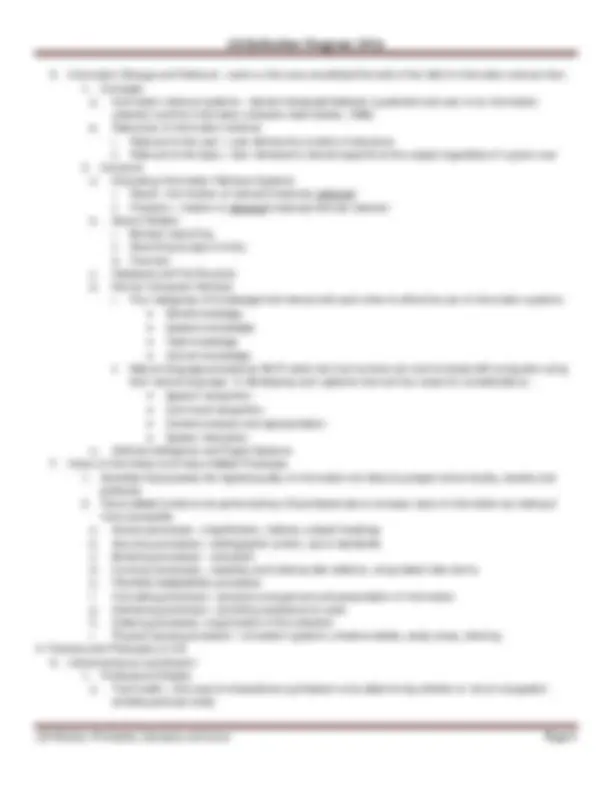
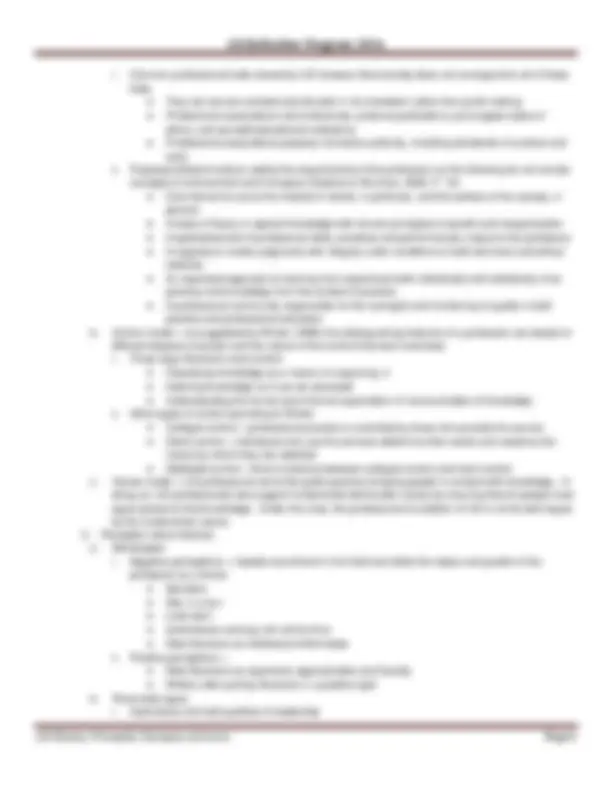
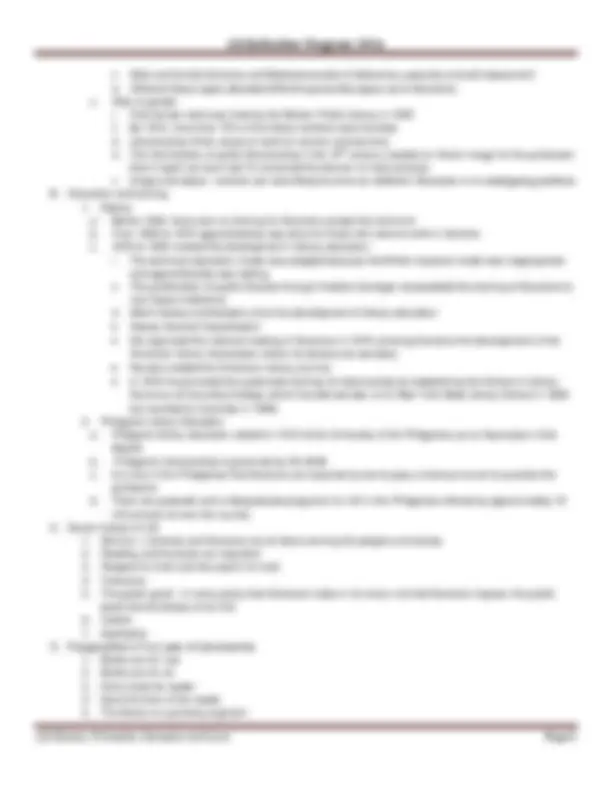
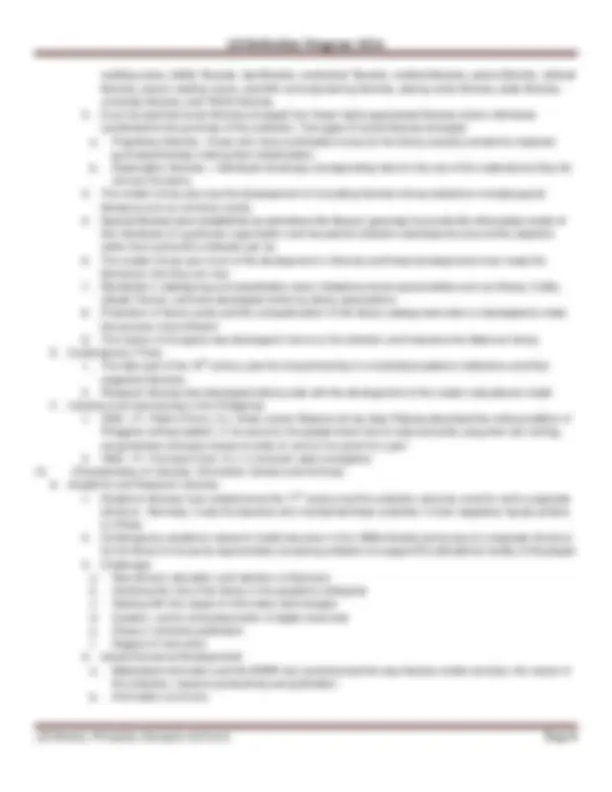
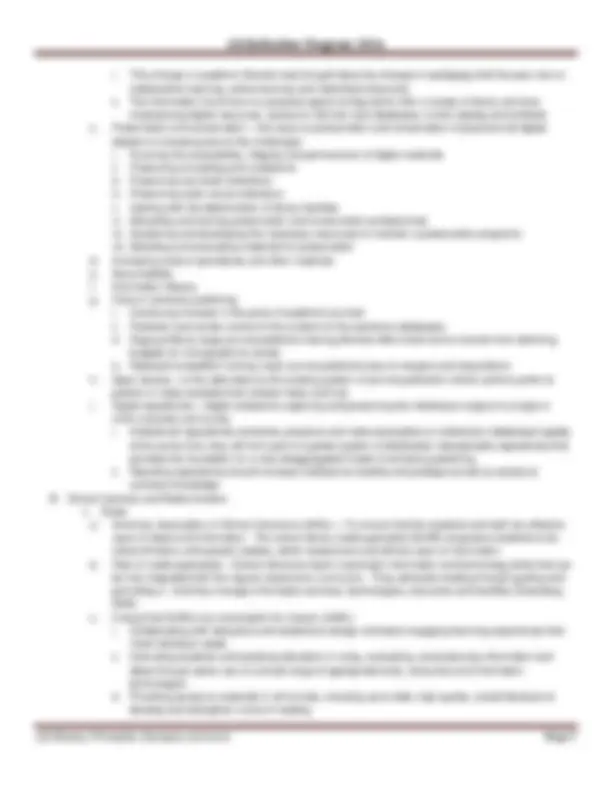
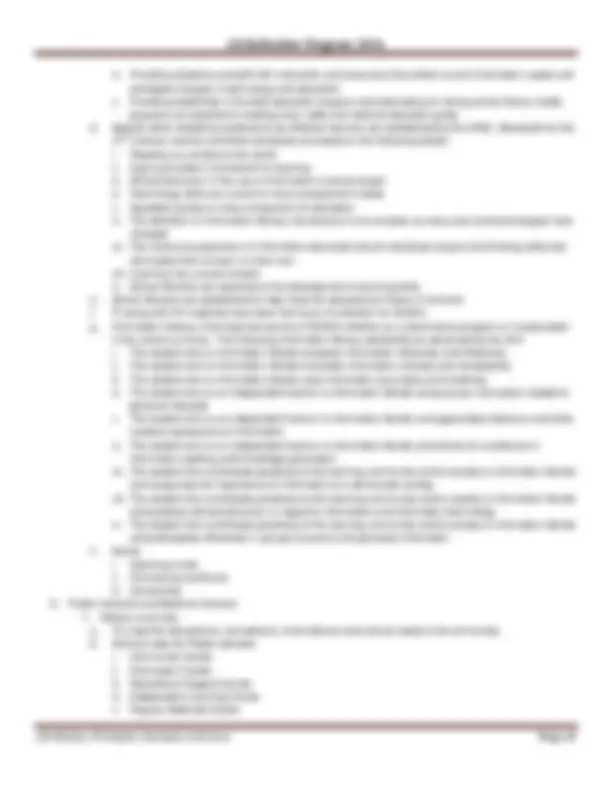
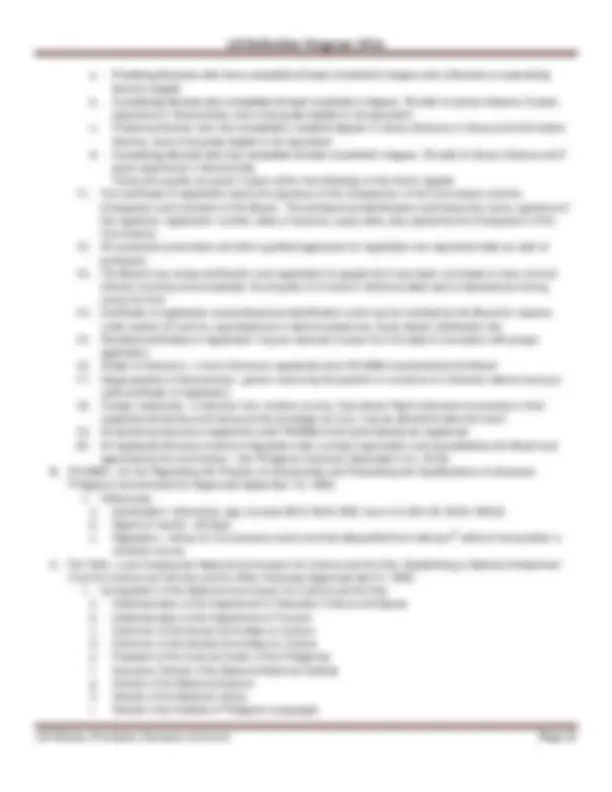
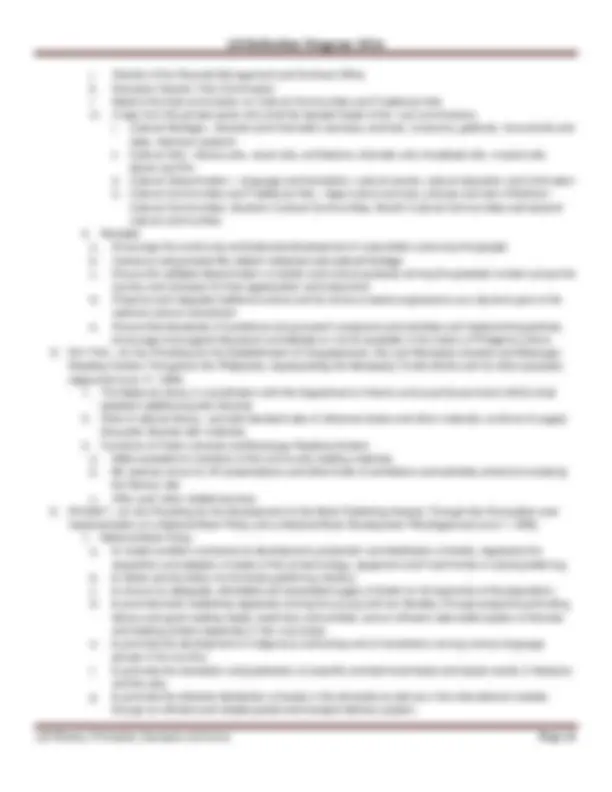
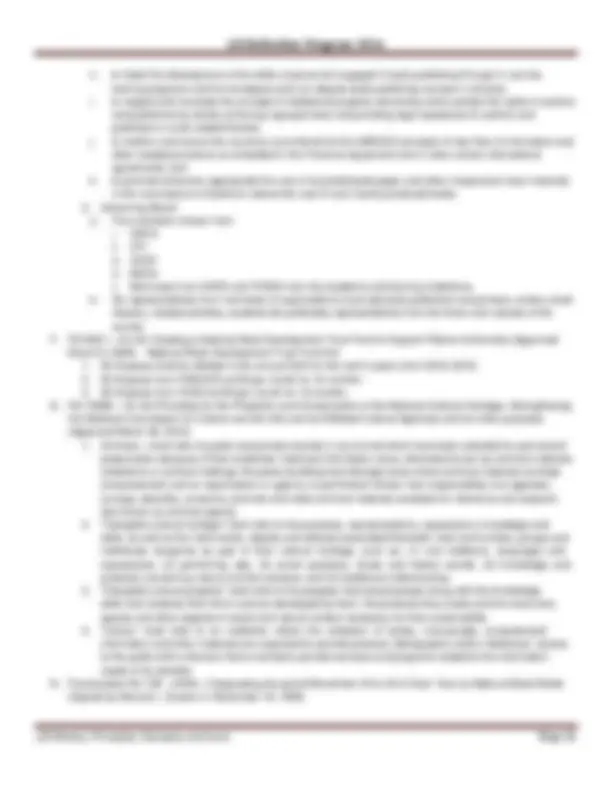


Study with the several resources on Docsity

Earn points by helping other students or get them with a premium plan


Prepare for your exams
Study with the several resources on Docsity

Earn points to download
Earn points by helping other students or get them with a premium plan
Community
Ask the community for help and clear up your study doubts
Discover the best universities in your country according to Docsity users
Free resources
Download our free guides on studying techniques, anxiety management strategies, and thesis advice from Docsity tutors
history and principles for the students
Typology: Study notes
Uploaded on 08/29/2019
4.5
(4)5 documents
1 / 16

This page cannot be seen from the preview
Don't miss anything!










I. Nature of Information and Information Science A. Knowledge Spectrum – the connectedness of data, information, knowledge and wisdom (Ackoff, 1989)
iii. Radio iv. Television v. Theatres vi. Videos and DVD vii. Video Games
i. Common professional traits shared by LIS however librarianship does not correspond to all of these traits They are service oriented and altruistic in its orientation rather than profit making Professional associations old conferences, produce publications, promulgate codes of ethics, and accredit educational institutions Professional associations possess normative authority, including standards of conduct and work ii. Proposed different traits to satisfy the requirements of the profession as the following do not include concepts of enforcement and monopoly (Gardner & Shulman, 2005, P. 14). Commitment to serve the interest of clients, in particular, and the welfare of the society, in general A body of theory or special knowledge with its own principles of growth and reorganization A specialized set of professional skills, practices and performances unique to the profession A capacity to render judgments with integrity under conditions of both technical and ethical certainty An organized approach to learning from experience both individually and collectively, thus growing new knowledge from the context of practice A professional community responsible for the oversight and monitoring of quality in both practice and professional education b. Control model – as suggested by Winter (1988); the distinguishing features of a profession are based on different degrees of power and the nature of the control that each exercises. i. Three ways librarians exert control Classifying knowledge as a means of organizing it Indexing knowledge so it can be accessed Understanding the formal and informal organization of various bodies of knowledge ii. Other types of control according to Winter Collegial control – professional practice is controlled by those who provide the service Client control – individuals who use the services determine their wants and needs by the means by which they are satisfied Mediated control – there is balance between collegial control and client control c. Values model – LIS professional serve the public good by bringing people in contact with knowledge. In doing so, LIS professionals also support fundamental democratic values by ensuring that all people have equal access to that knowledge. Under this view, the professional foundation of LIS is not its techniques but its fundamental values.
ii. Male and female librarians exhibited personality of deference, passivity and self-abasement iii. Different library types attracted different personality types (as to librarians) c. Role of gender i. First female clerk was hired by the Boston Public Library in 1852 ii. By 1910, more than 75% of the library workers were females iii. Librarianship fit the values of work for women (at that time) iv. The feminization of public librarianship in the 19th^ century created an inferior image for the profession that it might not have had if it remained the domain of male scholars v. Image and status – women are more likely to serve as children’s librarians or in cataloguing positions B. Education and training
d. These Roman public libraries contained religious articles along with public records and general literature available for borrowing. These libraries included halls where authors can recite their works and hold public forum. e. Romans recorded their history using papyrus scrolls which were then replaced by parchment codex for practical reasons B. Medieval Times – while Western Europe experienced political, economic and social chaos, the archival and scholarly missions of libraries were sustained by Byzantine and Moslem libraries
reading rooms, ladies’ libraries, law libraries, mechanics’ libraries, medical libraries, prison libraries, railroad libraries, saloon reading rooms, scientific and engineering libraries, sewing circle libraries, state libraries, university libraries, and YMCA libraries.
iv. Providing students and staff with instruction and resources that reflect current information needs and anticipate changes in technology and education v. Providing leadership in the total education program and advocating for strong school library media programs as essential to meeting local, state and national education goals. d. Specific skills needed by students to be effective learners are established by the AASL Standards for the 21 st^ Century Learner and these standards are based on the following beliefs: i. Reading is a window to the world ii. Inquiry provides a framework for learning iii. Ethical behaviour in the use of information must be taught iv. Technology skills are crucial for future employment needs v. Equitable access is a key component for education vi. The definition of information literacy has become more complex as resources and technologies have changed vii. The continuing expansion of information demands that all individuals acquire the thinking skills that will enable them to learn on their own viii. Learning has a social context ix. School libraries are essential to the development of learning skills. e. School libraries are established to help meet the educational mission of schools f. IT along with AV materials have been the focus of collection for SLMCs g. Information literacy is the topmost service of SLMCs whether as a stand-alone program or incorporated in the school curricula. The following information literacy standards are advanced by the ALA i. The student who is information literate accesses information efficiently and effectively ii. The student who is information literate evaluates information critically and competently iii. The student who is information literate uses information accurately and creatively iv. The student who is an independent learner is information literate and pursues information related to personal interests v. The student who is an independent learner is information literate and appreciates literature and other creative expressions of information vi. The student who is an independent learner is information literate and strives for excellence in information seeking and knowledge generation vii. The student who contributes positively to the learning community and to society is information literate and recognizes the importance of information to a democratic society viii. The student who contributes positively to the learning community and to society is information literate and practices ethical behaviour in regard to information and information technology ix. The student who contributes positively to the learning community and to society is information literate and participates effectively in groups to pursue and generate information h. Issues i. Declining funds ii. Diminishing workforce iii. Censorship C. Public Libraries and National Libraries
vi. Early Learning Center vii. Reference Center viii. Research Center c. There is a variety of users for the public libraries, funding comes either from local governments or communities as such support for its collection development also vary d. Issues confronting public libraries i. Politics ii. Financial stresses iii. Information Technology, Connectivity iv. Perception of the public v. Quality of services and facilities vi. Censorship issues vii. Demand problem viii. Service to diverse populations, to rural communities, to individuals with special needs ix. Children’s services, adult services, and geriatric services x. Cooperation between school libraries and public libraries D. Special Libraries and Information Centers
a. Practicing librarians who have completed at least a bachelor’s degree and a librarian or supervising librarian eligible b. A practicing librarian who completed at least a bachelor’s degree, 18 units in Library Science, 5 years experience in librarianship, and a first grade eligible or its equivalent c. Practicing librarian who has completed a masteral degree in Library Science or Library and Information Science, and a first grade eligible or its equivalent d. A practicing librarian who has completed at least a bachelor’s degree, 18 units in Library Science and 7 years experience in librarianship Those who qualify are given 3 years within the effectivity of this Act to register
j. Director of the Records Management and Archives Office k. Executive Director if the Commission l. Head of the Sub-commission on Cultural Communities and Traditional Arts m. 3 reps from the private sector who shall be elected heads of the sub-commissions i. Cultural Heritage – libraries and information services, archives, museums, galleries, monuments and sites, historical research ii. Cultural Arts – literary arts, visual arts, architecture, dramatic arts, broadcast arts, musical arts, dance and film iii. Cultural Dissemination – language and translation, cultural events, cultural education and information iv. Cultural Communities and Traditional Arts – Agta culture and arts, cultures and arts of Northern Cultural Communities, Southern Cultural Communities, Muslim Cultural Communities and lowland cultural communities
I. Proclamation No 120 s1999 – Declaring the Month of June 1999 and Every Year Thereafter as Philippine Book Development Month (Approved 25 June 1999 By Joseph Ejercito Estrada) J. Proclamation No 837 s1999 – Declaring the Month of November 1991 and Every Year Thereafter as “Library and Information Services Month”: (Approved November 19, 1999 by Corazon C. Aquino) K. Proclamation No 1014 s1997 – Declaring the Month of June 1997 as Philippine Book Development Month (Approved June 2, 1997 Fidel V. Ramos) L. Proclamation No 1222 s1998 – Declaring the Month of June as Philippine Book Development Month (Approved May 20 1998 Fidel V. Ramos)
References:
Ackoff, R. (1989). From Data to Wisdom. Journal of Applied System Analysis, 16: 3-9. Case, D. O. (2002). Looking for Information: A Survey of Research on Information Seeking, Needs and Behavior. San Diego: Academic Press. Gardner, H. and Shulman, L.S. (2005). “The Profession in America Today” Daedalus 134 (13-18). Harter, S. (1986). Online Information Retrieval. Orlando, Fl.: Academic Press Rubin, R. (2000). Foundations of Library and Information Science, 3rd^ ed. NY: Neal-Schuman.
The outline is largely based from the book Foundations of Library and Information Science by Rubin (2010)